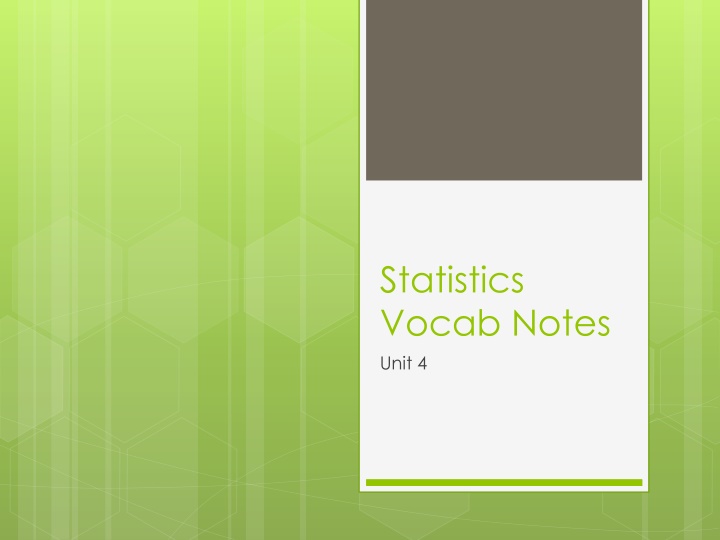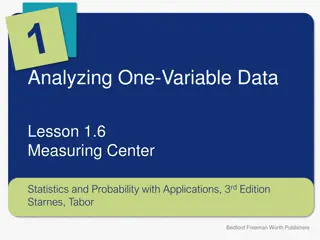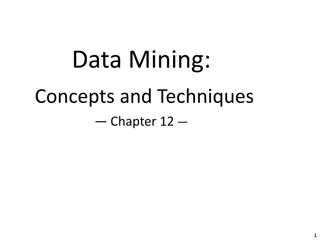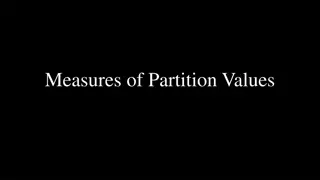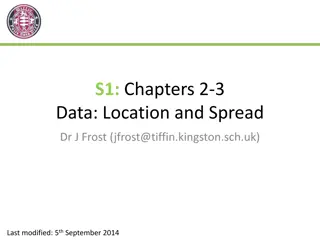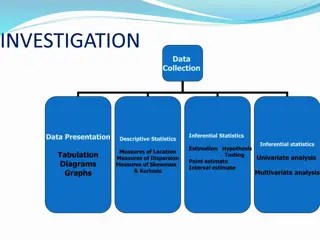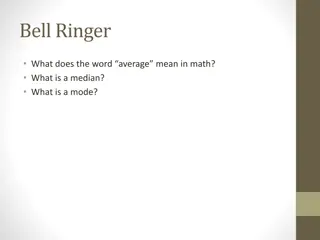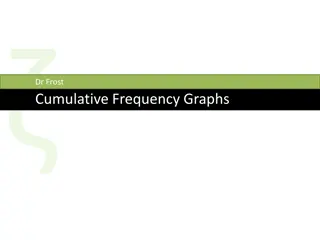Statistical Measures: Mean, Median, Range, Outlier, Quartiles
Understanding statistical measures is crucial in data analysis. Learn about the mean, median, range, outlier, first quartile, third quartile, and interquartile range. Discover their definitions and calculation methods with examples.
Download Presentation

Please find below an Image/Link to download the presentation.
The content on the website is provided AS IS for your information and personal use only. It may not be sold, licensed, or shared on other websites without obtaining consent from the author.If you encounter any issues during the download, it is possible that the publisher has removed the file from their server.
You are allowed to download the files provided on this website for personal or commercial use, subject to the condition that they are used lawfully. All files are the property of their respective owners.
The content on the website is provided AS IS for your information and personal use only. It may not be sold, licensed, or shared on other websites without obtaining consent from the author.
E N D
Presentation Transcript
Statistics Vocab Notes Unit 4
Mean The average value of a data set, found by adding all values and dividing by the number of data points Example: 5 + 4 + 2 + 6 + 3 = 20 20= 4 5 The Mean is 4
Median The middle-most value of a data set; 50% of the data is less than this value, and 50% is greater than it Example: Put # s in order Median (Middle #) is 4 2,3,4,5,6
Range The difference between the highest and lowest numbers in the data set. Example: 11, 12, 15, 17, 22, 23, 29 29 11 = 18 The range is 18
Outlier A data value that is much greater than or much less than the rest of the data in a data set. 164, 175, 126, 135, 55,159, 143 Example:
First Quartile The value that identifies the lower 25% of the data; the median of the lower half of the data set; written as Q 1
Third Quartile Value that identifies the upper 25% of the data; the median of the upper half of the data set; 75% of all data is less than this value; written as Q 3 Example:
Interquartile Range The difference between the third and first quartiles; 50% of the data is contained within this range Q1 Q3 Example: 11, 12, 15, 17, 22, 23, 29 Subtract Third Quartile - First Quartile = IQR 23 12 = 11 IQR = 11
Interquartile Range The numbers below represent the number of homeruns hit by players of the North Paulding baseball team. 2, 3, 5, 7, 8, 10, 14, 18, 19, 21, 25, 28 Q1 = 6 Q3 = 20 IQR = Q3 - Q1 Interquartile Range: 20 6 = 14
Box and Whisker Plot The numbers below represent the number of homeruns hit by players of the Hillgrove baseball team. 2, 3, 5, 7, 8, 10, 14, 18, 19, 21, 25, 28 Q1 = 6 Interquartile Range: 20 6 = 14 Q3 = 20 6 12 20
Box Plot A plot showing the minimum, maximum, first quartile, median, and third quartile of a data set; the middle 50% of the data is indicated by a box. Example:
Dot Plot A frequency plot that shows the number of times a response occurred in a data set, where each data value is represented by a dot. Example:
Histogram A frequency plot that shows the number of times a response or range of responses occurred in a data set. Example:
